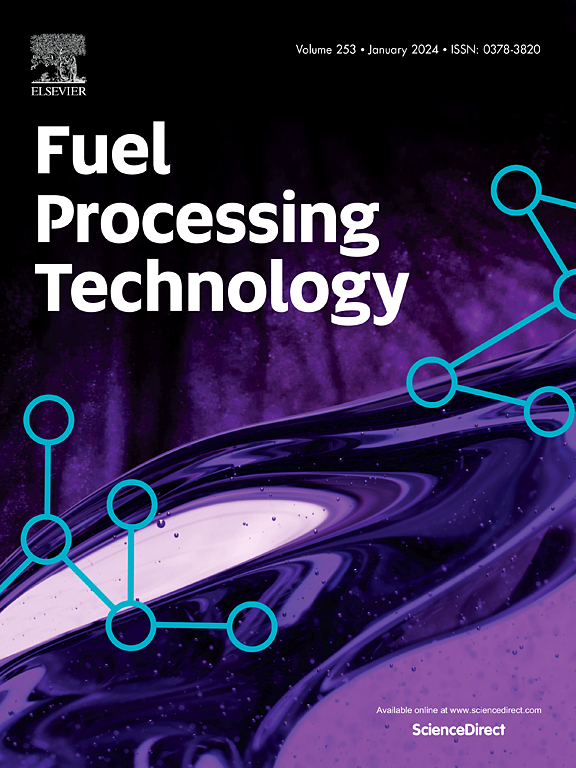塑料热解:热解温度对乙烯产量和直接二氧化碳足迹的影响
IF 7.2
2区 工程技术
Q1 CHEMISTRY, APPLIED
引用次数: 0
摘要
对化学回收聚乙烯的能量和排放进行了估算。该工作流包括生成热解分解数据的实验部分和模拟该过程的过程模型。对低密度聚乙烯(LDPE)球团和线性低密度聚乙烯(LLDPE)球团在600 ~ 800℃的不同温度下进行热解耦合气相色谱分离、质谱和火焰电离检测(Pyr-GC-MS /FID)。利用质谱数据测定热解产物的碳氢化合物组成,并用FID数据进行定量分析。然后将量化的碳氢化合物组成作为输入数据,用于模拟Aspen Plus的热解反应器和分离过程。对下游化学过程(如裂解油加氢加工、蒸汽裂解和聚合)的直接二氧化碳排放量进行了估算。过程分析包括对热解装置位于独立场地并与周围化工厂集成的方案进行评估。结果表明,较高的热解温度为裂化装置与裂化装置的配置创造了可能性。本文章由计算机程序翻译,如有差异,请以英文原文为准。
Plastics pyrolysis: The impact of pyrolysis temperature on ethylene production and direct carbon dioxide footprint
An attempt to estimate the energy and emissions for chemically recycling polyethylene is presented. The workflow includes an experimental section to generate pyrolysis decomposition data, and a process model to simulate the process. Pyrolysis coupled to gas chromatographic separation with mass spectrometric and flame ionization detection (Pyr-GC–MS/FID) was carried out at different temperatures, ranging from 600 to 800 °C on both low-density polyethylene (LDPE) pellets and linear low-density (LLDPE) pellets. The hydrocarbon composition of the pyrolyzed materials was determined using the MS data, while quantification was performed using the FID data. The quantified hydrocarbon composition was then used as the input data for modeling the pyrolysis reactor and separations process in Aspen Plus. The direct CO2 emissions were estimated for downstream chemical processes, such as pyrolysis oil hydroprocessing, steam cracking, and polymerization. The process analysis included the evaluation of scenarios where the pyrolysis plant was located in a stand-alone site and integrated with surrounding chemical plants. It was shown that higher pyrolysis temperatures create the possibility for collocating a pyrolysis plant with the steam cracker process.
求助全文
通过发布文献求助,成功后即可免费获取论文全文。
去求助
来源期刊

Fuel Processing Technology
工程技术-工程:化工
CiteScore
13.20
自引率
9.30%
发文量
398
审稿时长
26 days
期刊介绍:
Fuel Processing Technology (FPT) deals with the scientific and technological aspects of converting fossil and renewable resources to clean fuels, value-added chemicals, fuel-related advanced carbon materials and by-products. In addition to the traditional non-nuclear fossil fuels, biomass and wastes, papers on the integration of renewables such as solar and wind energy and energy storage into the fuel processing processes, as well as papers on the production and conversion of non-carbon-containing fuels such as hydrogen and ammonia, are also welcome. While chemical conversion is emphasized, papers on advanced physical conversion processes are also considered for publication in FPT. Papers on the fundamental aspects of fuel structure and properties will also be considered.
 求助内容:
求助内容: 应助结果提醒方式:
应助结果提醒方式:


